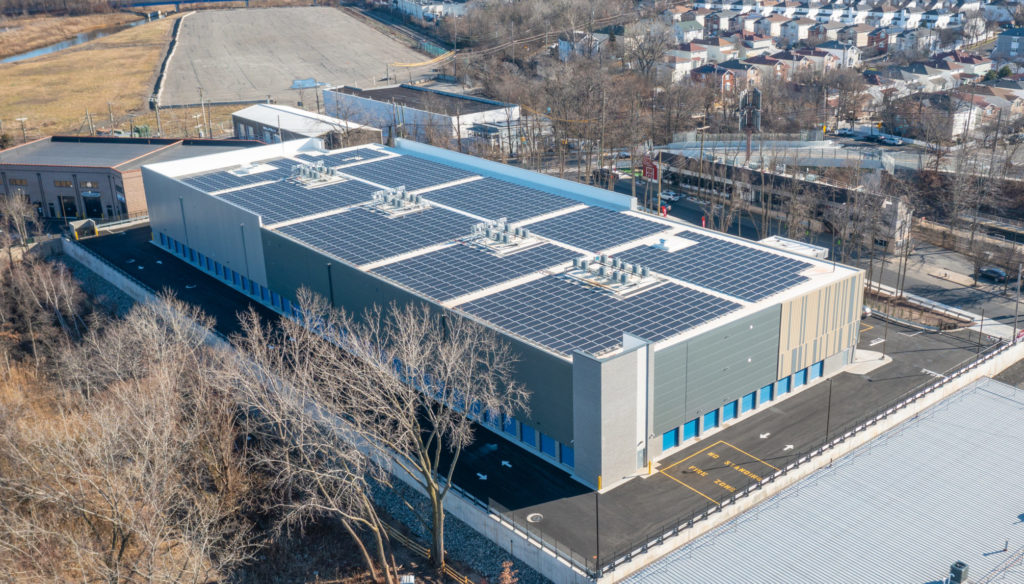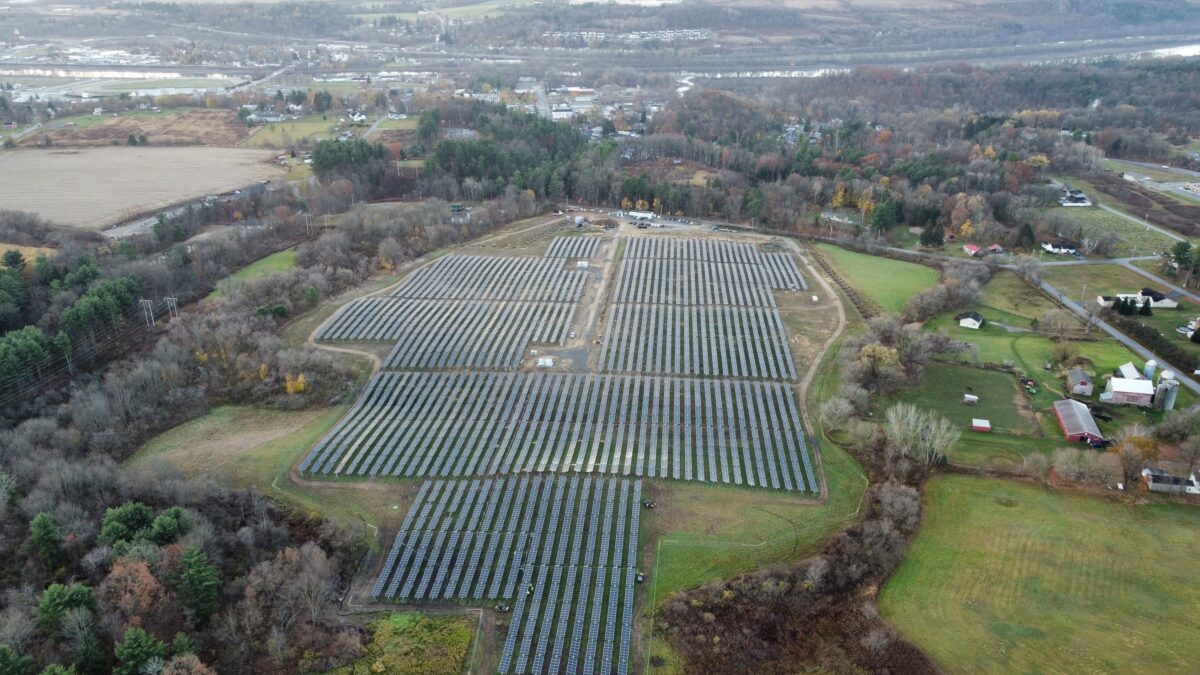ESG New Year’s Resolutions to Help Meet Targets and Establish Leadership
January 17, 2023
2022 was a landmark year for ESG (environmental, social, and corporate governance), as the commercial real estate sector cemented its commitment to not only goal setting, but action. Sources of pressure to take action continue to expand beyond investors and the public, as regulation mandating emissions reduction for building owners becomes more widespread. Additionally, increasing importance of employee, tenant, and public wellness has placed greater emphasis on the social aspect of ESG, reminding us that ESG is not just about environmental sustainability.
In 2023, the momentum behind ESG will continue to grow, and building owners will need to act boldly and quickly to capture value and competitive advantage. By embracing our recommended new year’s resolutions, building owners can not only keep pace with the need for ESG, but emerge as leaders, securing a myriad of financial, reputational, and operational benefits.
1. Green the Lease: Make sustainability mutually beneficial for landlord and tenant
There is a misconception that ESG action is a one-sided affair, with the responsibility (and benefits) falling exclusively on building owners. However, effective ESG strategies call for collaborative actions from both landlord and tenant, laying out specific roles and responsibilities that produce mutually beneficial outcomes.
Managing expectations and transparency around these collaborative actions can be facilitated by making use of an unexpected but well-known tool: the lease. The concept of green leasing has emerged as a way to improve the sustainability of properties through agreements that provide benefits to all parties involved. Green leases include clauses and operational procedures that advance efficient and carbon neutral buildings, laying out expected actions and results. Examples include lease additions that ensure that those paying for energy efficiency upgrades are receiving the associated savings, agreements concerning data collection and reporting, and guidelines concerning the sustainable use of resources such as electricity and water to minimize waste.
Green leases should not be perceived as replacements to traditional leases. They are better described as leases that go a step further in taking sustainability into consideration, and work to address the existing challenge that leases face concerning the delegation of action and impact. This issue, known as the split incentive problem, emerges when the party paying for sustainability upgrades (typically the landlord) does not sufficiently benefit from the resulting savings, as it is the tenant who typically pays the utility for their power. This can result in inaction, and other scenarios exist where similar barriers are experienced with the roles reversed. By including clauses in a lease to ensure that the actions that drive energy savings, as well the cost savings themselves, are shared between landlord and tenant, these leases can become tools to incentivize beneficial, sustainable behavior by all parties. This will ultimately help owners and tenants alike reach their environmental impact goals and reporting requirements.
A lease does not have to be re-written to become green, and can instead be amended at a time that makes sense for both parties to include the relevant clauses. Oftentimes, the right time for this may align with major clean energy upgrades, such as the installation of solar panels, batteries, or electric vehicle (EV) chargers. Catalyze is happy to support partners who are implementing clean energy solutions with their green leasing strategies, offering our expert advice on best practices and what we have seen implemented alongside our projects in the past.
2. Streamline your measurements: Improve quality and efficiency of data collection
With the widespread adoption of ESG targets, building owners are realizing the challenges associated with not only meeting those targets, but tracking progress made towards them. Data collection can be particularly tricky when there are multiple activities and technologies being tracked, which may be managed by separate partners who each collect and report their data using different methodologies and platforms, leading to a lack of standardization. Additionally, when it comes to meeting regulatory and financial reporting requirements, the need for accuracy is paramount.
Many organizations are finding the ESG data collection and reporting process to be labor intensive, confusing, and ultimately, frustrating. Yet, it is an essential aspect of ESG action, and is needed to establish baseline metrics and assess the effectiveness of solutions for investors, regulators, and tenants. Without quality data, ESG action loses value, and targets become unattainable.
The use of technology and the streamlining of solutions can be combined to provide building owners an edge when it comes to ESG data collection and reporting. For example, Catalyze’s REenergyze® software integration platform, available exclusive to our partners, streamlines all aspects of solar, storage and EV charging projects. Not only does REenergyze help effectively navigate the origination, development, construction, operation, and optimization of projects, but it also collects valuable data at every step of the way, ensuring transparency into the energy and financial savings associated with clean energy upgrades.
Because Catalyze manages the entire lifecycle of clean energy assets, from planning to operation, there is no need to collect variable data from multiple sources. The REenergyze platform acts as a one-stop-shop for data, offering uniformity in how data is collected and presented, simplifying reporting processes for building owners. This benefit is further amplified for customers who operate across national portfolios, where property owners may otherwise have had to deal with numerous solution providers across multiple states.
By partnering with Catalyze, you can implement integrated clean energy solutions across national portfolios, streamlining the execution of ESG strategies. Our platform allows customers to also reduce time, effort, and stress allocated towards ESG reporting, providing a distinct advantage over competitors.
3. Integrate forward thinking solutions: Plan around future standards, not today’s
A key aspect of establishing leadership on ESG is to implement solutions that will flourish in the long term. Clean energy solutions should be planned with industry trends, emerging technologies, and best practices in mind, looking beyond today’s standards and your immediate competitors and pulling from the examples set by advanced markets and leading practitioners.
Renewable energy technologies are great examples of opportunities to plan around future needs. Currently, rooftop solar is experiencing widespread adoption, as the technology has been well established and the resources for its implementation are widely available. And while building owners should absolutely incorporate solar power into their properties, solar alone is no longer a sufficient solution for companies looking to maximize the financial, resilience, and reputational benefits of their clean energy solutions.
The integration of additional clean energy solutions alongside solar is a key opportunity to establish ESG leadership and meet decarbonization goals. For example, energy storage allows building owners to be strategic with the solar power they produce, offering the ability to save this clean, affordable energy for use when power from the grid may be more expensive or carbon intensive. Policies are emerging that further encourage the adoption of energy storage technologies, and it is becoming clear that solar alone will be insufficient to meet the sustainability needs of tomorrow’s buildings. Incorporation of battery storage will allow for cost management, emissions reduction, and increased resiliency against potential outages.
Similarly, global trends point to the EV market expanding rapidly. This signals an opportunity for property owners to meet the growing demand for EV infrastructure, particularly in the form of charging stations. By offering such resources on-site, buildings can become more attractive for tenants, and offer an advantage over competitors who have yet to capitalize on this clearly emerging trend. As we expect such clean energy amenities to be standard in the future, the best time to implement them is now, to establish leadership and stand out from the crowd.
Forward thinking solutions are not exclusive to technologies, but can also include strategies. Looking beyond one’s current market to advanced markets, where climate regulations and standards are stricter, can be an excellent source of inspiration concerning best practices. These can include European nations, major cities, and other industries.
An example of a strategy to integrate into your clean energy solution is the effective management of renewable energy certificates (RECs). RECs are issued when renewable electricity is generated and delivered to the electricity grid, and holds monetary value that can be traded in markets. There are complexities to navigating RECs and their associated markets, including their impacts on Scope 2 emissions and how REC ownership is determined based on the terms of your clean energy solutions. Leaders in the ESG space will know how to structure agreements to ensure ownership of RECs generated on their properties, helping to further reduce the environmental impact of properties in a more direct and impactful way.
The complexities of navigating various cutting-edge technologies and strategies can be a tall task for most building owners. Therefore, Catalyze is a valuable partner for the clean energy transition, offering expertise on managing the financial, regulatory and technical hurdles associated with such solutions. A trusted partner with proven domain expertise can play a key role in ensuring the effective preparation for the future landscape of the industry, guiding the implementation of integrated solutions and strategies that are scalable.
4. Embrace the ‘S’: Build on the intersection between environmental and social benefits
In various forums, the term ESG has been used interchangeably with environmental sustainability, as the ‘E’ in ESG has by far drawn the most focus and action. Yet, there has been growing attention to the responsibility on property owners to have a positive impact on the health, safety, and well-being of their tenants, employees, and/or communities.
16% of the country lives in energy poverty, where over 6% of household income is spent on energy bills. Over 5.2 million households living above the Federal Poverty Line still face energy poverty, with Black, Hispanic, and Native American communities being disproportionately affected. The Inflation Reduction Act includes incentives to drive investment in these communities, enforce strong labor standards, and reduce monthly bills. However, additional action from building owners is a necessary component to addressing such issues, and there is an opportunity to do so in a way that also benefits the environment.
Building owners, even if they don’t necessarily represent residential properties, can support the community in addressing its environmental and social challenges. This can be accomplished through clean energy solutions, where the benefits of assets procured by a building can be shared with neighboring residents and businesses. In this way, properties can reduce emissions while also engaging as a leading, active community member.
For example, properties can participate in community solar programs. Real estate can be utilized to house solar panels, where the generated power is delivered to nearby residents and businesses at a reliable, reduced rate. In some cases, these services can be exclusively offered to low- and moderate-income community members. This allows program participants to not only better manage their power bills, but also potentially reduce their own carbon footprints. In this way, building owners can contribute to the community’s overall sustainability, while providing a key social service.
Similarly, as EV ownership increases, building owners can open access of their EV charging infrastructure to the community. As a result, residents will have a reduced barrier to entry into EV ownership, and the electrification of the community can be accelerated. Also, with the integration of energy storage technologies, buildings can act as community resilience hubs. As such, during power disruptions, these resilient properties can be one of the only ones in the community that maintain access to electricity. In these times, buildings can open their doors to neighbors for shelter and essential services, providing peace of mind to residents in the face of life-threatening events.
Catalyze has experience implementing projects where the beneficiaries include entire communities. Be it community solar or other creative solutions, Catalyze can provide expert guidance on how such projects can be structured and operated to ensure the maximum benefit to both the environment and the community.

